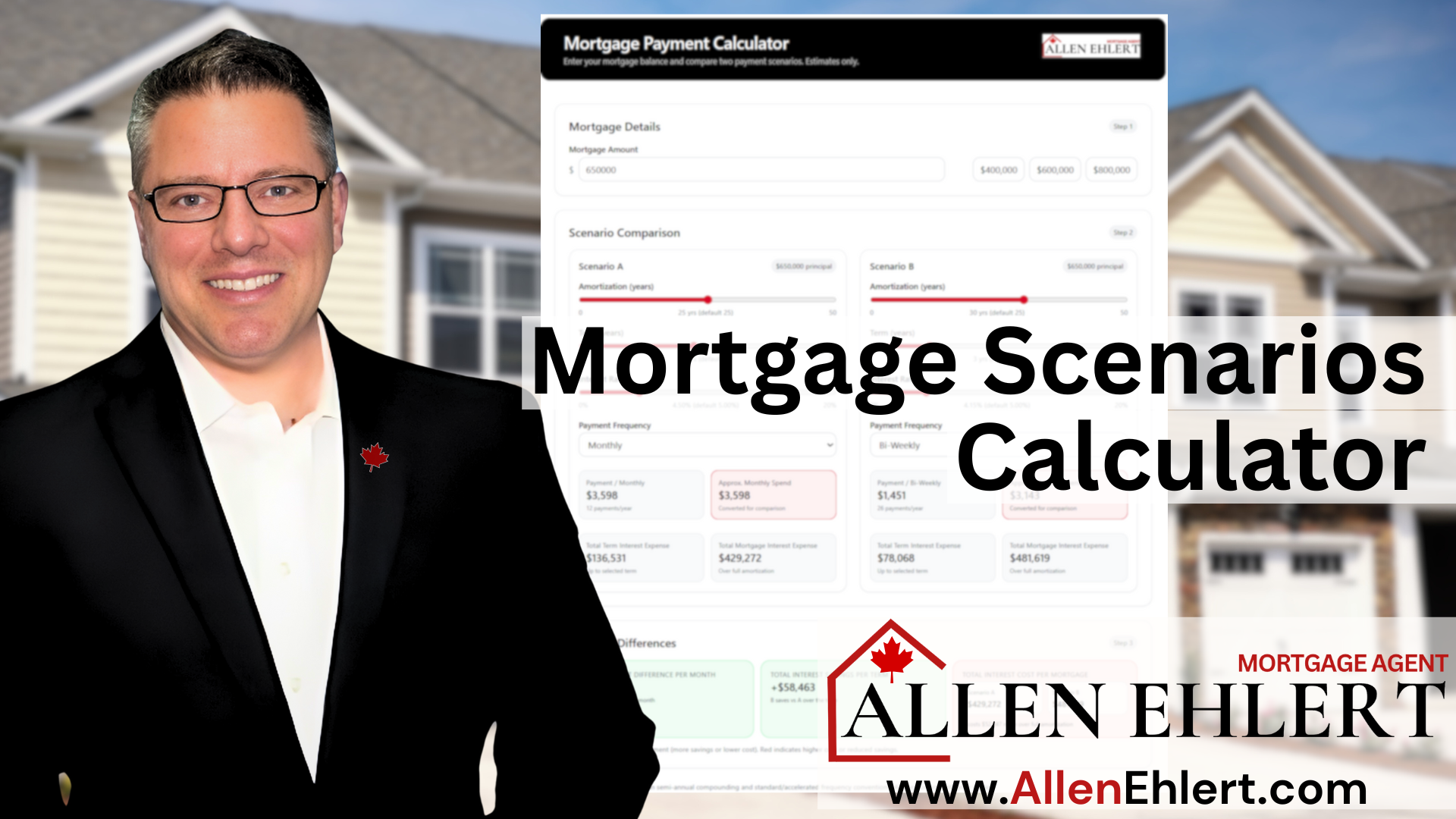…. And Why That Low Rate Isn’t Always a Bargain
We’ve all seen them — those ultra-low mortgage rates advertised by the big banks or online lenders. They’re tempting, no doubt about it. Who doesn’t want to save a few bucks on interest? But here’s what you might not realize: those “basic,” “no-frills,” or “limited feature” mortgages come with some fine print that can cost you more down the road than you save upfront.
If you’re shopping for a mortgage — or helping a client who is — it’s important to know what’s behind the rate. A lower rate often comes with fewer privileges and more restrictions, and those limitations can come back to bite you if life doesn’t go exactly according to plan.
In this article, I’ll break down what limited feature mortgages really are, what lenders look for, and how you can decide if this type of mortgage fits your goals — or if you’re better off with something more flexible.
Here’s what I’ll cover:
What Are Limited Feature Mortgages, Really?
What Lenders Look for in Borrower Qualifications
Documentation You’ll Need to Provide
What the Mortgage Can Be Used For
Amortization Options: How Long You Can Stretch the Payments
Real-World Examples: How Realtors and Clients Can Put This Knowledge to Work
How I Can Help: Making Sure the Mortgage Fits the Client, Not Just the Rate
What Are Limited Feature Mortgages, Really?
Limited feature mortgages are designed to offer a slightly lower rate by stripping away flexibility. On the surface, that might sound fine — especially if you’re laser-focused on rate. But here’s what you give up:
- Smaller or no prepayment privileges
- No ability to port the mortgage if you move
- Higher or inflexible penalties if you break early
- Limited options to blend and extend
- Often registered as a collateral charge, which makes switching lenders expensive at renewal
These are mortgages designed for people who are absolutely sure they won’t break the term early and don’t plan to make extra payments. If you’re that person, great — but most people aren’t (and in truth, most people don’t realize this about themselves until it is too late).
What Lenders Look for in Borrower Qualifications
Even though these mortgages are stripped-down, lenders still have the same expectations when qualifying you:
- Stable income (salary, hourly, self-employed with documentation)
- Strong credit history
- Sufficient down payment (minimum 5% for insured mortgages, 20% for uninsured)
- Standard debt servicing guidelines (GDS/TDS ratios)
Limited feature doesn’t mean limited scrutiny. Banks still want to know you’re a solid borrower.
Documentation You’ll Need to Provide
Nothing changes on the paperwork side. You’ll still need:
- Employment verification (letter, pay stubs, T4s, NOAs)
- Proof of down payment (bank statements, gifted funds if applicable)
- Government ID
- Credit history review
The difference with a limited feature mortgage isn’t in how you qualify — it’s in how restrictive the mortgage is after you’ve signed.
What the Mortgage Can Be Used For
These mortgages function the same as regular mortgages in terms of purpose. They’re typically available for:
- Primary residences
- Second homes (sometimes)
- Owner-occupied properties
What you can’t usually do:
- Use them for investment properties
- Refinance easily mid-term without breaking the mortgage and paying penalties
Property Types That Qualify
The property types don’t change with a limited feature mortgage. You can still buy:
- Detached homes
- Townhouses
- Condominiums
- New builds or resale
As always, properties need to meet the lender’s general guidelines on condition, marketability, and location.
Amortization Options: How Long You Can Stretch the Payments
- 25 years is standard for insured mortgages.
- 30 years is usually available with 20% down.
- 30+ years may be available through alternative lenders
Limited feature mortgages don’t really change amortization guidelines — but they often lock you into fixed terms with fewer exit strategies.
Real-World Examples: How Realtors and Clients Can Put This Knowledge to Work
Meet Lisa and Mark — First-Time Buyers
Lisa and Mark are buying their first home. Their bank offered them a limited feature mortgage at a slightly lower rate. “It’s only a 0.10% savings,” they told their realtor, “but it’s still money saved.”
Their realtor sent them my way to double-check. I explained that while they might save $12 a month, they also:
- Couldn’t port the mortgage if they had to move
- Couldn’t blend and extend if rates dropped
- Would pay a steep penalty if they broke the mortgage early
They decided flexibility was worth more than a tiny rate break. They chose a mortgage that let them sleep at night, not one that locked them in.
How Realtors Can Help
Realtors can save clients headaches by reminding them:
- Get pre-approved with flexibility in mind, not just rate
- Life changes — job relocations, growing families, opportunities happen
- Talk to a mortgage agent (me!) who can help explain the differences clearly
How I Can Help: Making Sure the Mortgage Fits the Client, Not Just the Rate
My job isn’t just to get you the lowest rate. My job is to help you understand the bigger picture:
- How long do you plan to stay in this home?
- Will you want to make extra payments?
- Could a job or family change force a move?
I ask these questions because they matter. A mortgage should fit your life, not just your budget today. I’ll walk you through all the options — full-feature, limited feature, alternative lenders — so you can make a decision that’s informed, not rushed.
Allen’s Final Thoughts
A limited feature mortgage isn’t inherently bad. It just has to fit your lifestyle, your future plans, and your financial comfort zone. Don’t chase the lowest rate without understanding the fine print.
If you’re not sure what’s best for you — or you’re helping a client figure it out — I’m here to offer honest advice, clear explanations, and smart solutions. Let’s make sure your mortgage decision sets you up for success, not surprises.
Your mortgage should work for you. Not against you. Let’s make sure it does.
Reach out when you’re ready — I’m here to help.












